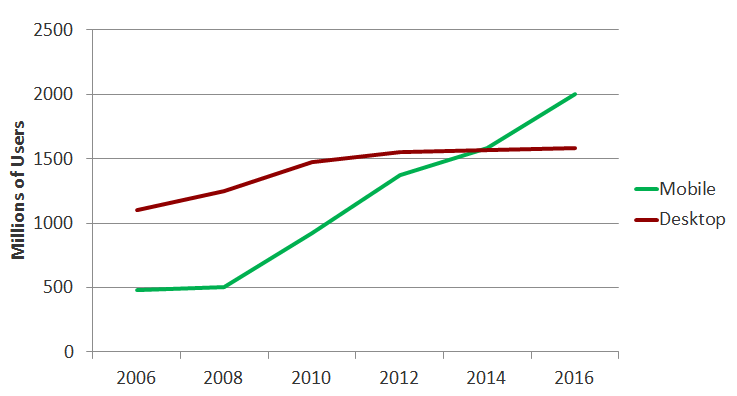 Defining the attributes to look for in any new hire is really challenging.
Defining the attributes to look for in any new hire is really challenging.
People are complex and every situation and every environment is different. So it's extremely difficult to apply a blanket set of attributes that will lead to success in any job.
I’ve found that this is particularly difficult with “strategic sales” roles in a startup. By strategic sales I mean a role where a salesperson is selling a highly innovative product into a large organization that requires a large investment of time and/or money from that organization.
It’s important to define strategic sales because the skill set required to be able to close strategic deals is very different from the skill set required to close smaller, more defined, "transactional" deals. Often, success in transactional selling comes down to simple hard work and effort. If you analyze a transactional sales funnel you'll see that there actually isn’t a huge difference between conversions for high performing salespeople and conversions for low performing salespeople (by conversions I mean things like 'phone call to meeting set' and 'meeting held to verbal commitment'). Success in that world often comes down to volume. More calls = more sales.
While there’s certainly nothing wrong with good old-fashioned hard work -- in fact, it's a requirement -- strategic sales is almost exactly the opposite of transactional sales. Conversions really matter and lead qualification is even more crucial because strategic deals require a huge time commitment from the salesperson. And there are massive differences between the conversion rates of high-performing salespeople versus low-performing salespeople. A high-performing strategic salesperson can convert 100% of their meetings into an active sales cycle; a low performing strategic salesperson may convert none. Literally zero. Strategic sales is not a numbers game.
Ben Horowitz likes to say that closing a deal with a large organization is like passing a law in congress. And it’s even harder than that when selling innovation — there's no set process for the buyer to buy within their organization or budget to buy the product. And in a startup, you’re small and nobody knows you and you don’t have a clearly defined sales process and you don't have perfectly polished sales materials. It’s really difficult.
I've thought a lot about the attributes that are most closely correlated with success in strategic sales. I've seen a lot of successful strategic salespeople and a lot of unsuccessful strategic salespeople. It's a problem I've been trying to understand for years.
Recently I’ve spoken to a number of people I trust on this topic and here’s where I think I’ve landed. Here are the four key attributes of a successful strategic salesperson.
Insatiable curiosity
In order to solve a complex problem you need to fully understand it. How does the buyer buy? Who has influence in the organization? What value do customers see in the product? What does the customer do during the day? How is the buyer bonused or promoted? What other options does the buyer have?
I could literally write 100 more questions like this. A strategic salesperson must always be wondering about the answers to these questions. They should constantly be learning from their customers, their leadership, their colleagues, the media, their competitors and anyone else that will talk to them. They need to be obsessing about the problem and trying to build a story and a solution and constantly iterating their approach.
A person that doesn’t have this level of insatiable curiosity simply won’t figure it out. They'll get stuck.
Optimistic grit
I’m fusing two attributes together with this one but I think it’s necessary. Any type of sale will inevitably lead to lots of rejection of the salesperson, the product and the company. This sucks. It’s painful. It’s even worse when selling innovation because there will be prospects that think the idea is crazy and will never work and the buyer has no process or defined way to buy the product. In order to get through this the salesperson must be a winner and must have a winning attitude and know that they can overcome. And they must have the grit and determination to keep getting up after they get knocked down. It may sound cliché but it's true. I've never met a pessimist that was good at strategic sales. There will be an endless number of reasons why it won’t work and the only people I’ve seen that will push through have a high level of optimistic grit.
Extreme humility
I used to joke that there are two types of salespeople:
1.) The type of salesperson that flies home from a bad meeting with a prospect and sits on the plane mentally blaming the product, the marketing team, the legal team, their boss or the prospect that just doesn’t “get it."
2.) The salesperson that sits on the plane thinking: How could I have answered that one question better? What else should I add to the presentation? What should I take out? What’s the context of the person that didn’t like the product? Where are they coming from? Does the product I’m selling threaten some of the people in the room? What went well in that meeting and what didn’t go well in that meeting? Who can help me get better?
The second approach requires an immense, almost unnatural level of humility. It’s human nature to point fingers when things don’t go well. It’s also often perfectly reasonable -- because it might actually may be someone else’s fault! But placing energy into #1 is a losing approach. Obsessing about the things that we can control is the way to win. So much energy can be soaked up by complaining and blaming others. Great strategic salespeople transform the energy that most put into complaining and blaming and point it toward improvement.
Ability to educate and inspire
I’ve written before that people buy with their heart and justify it with their mind. This is why I advocate not showing a lot of numbers in an initial sales presentation — the prospect doesn’t know or trust the salesperson yet and they’re generally not buying for ROI anyway. They’re buying because of the way the product makes them feel.
As a result, when selling innovation it’s crucial that the buyer be on board with the salespersons's mission and buy in to their perspective on both the problem they have and the way that the salespersons's company is going about solving that problem. The sale has to be somewhat fun and interesting and educational and insightful. It can’t be boring. I don’t mean that the salesperson has to personally be super charismatic or an amazing presenter (though that helps), I mean that they have to be intelligent and interesting and insightful. The buyer has to want to get behind the company and the product -- they have to become a true advocate.
It's a lot of work for a company to buy something. It requires security reviews, legal reviews, budget reviews, consensus building and many other activities. It also creates a lot of risk for the champion. If they're going to go on the line and buy an innovative product they have to be excited and inspired.
Great strategic salespeople continuously inspire, excite and educate their prospects.



